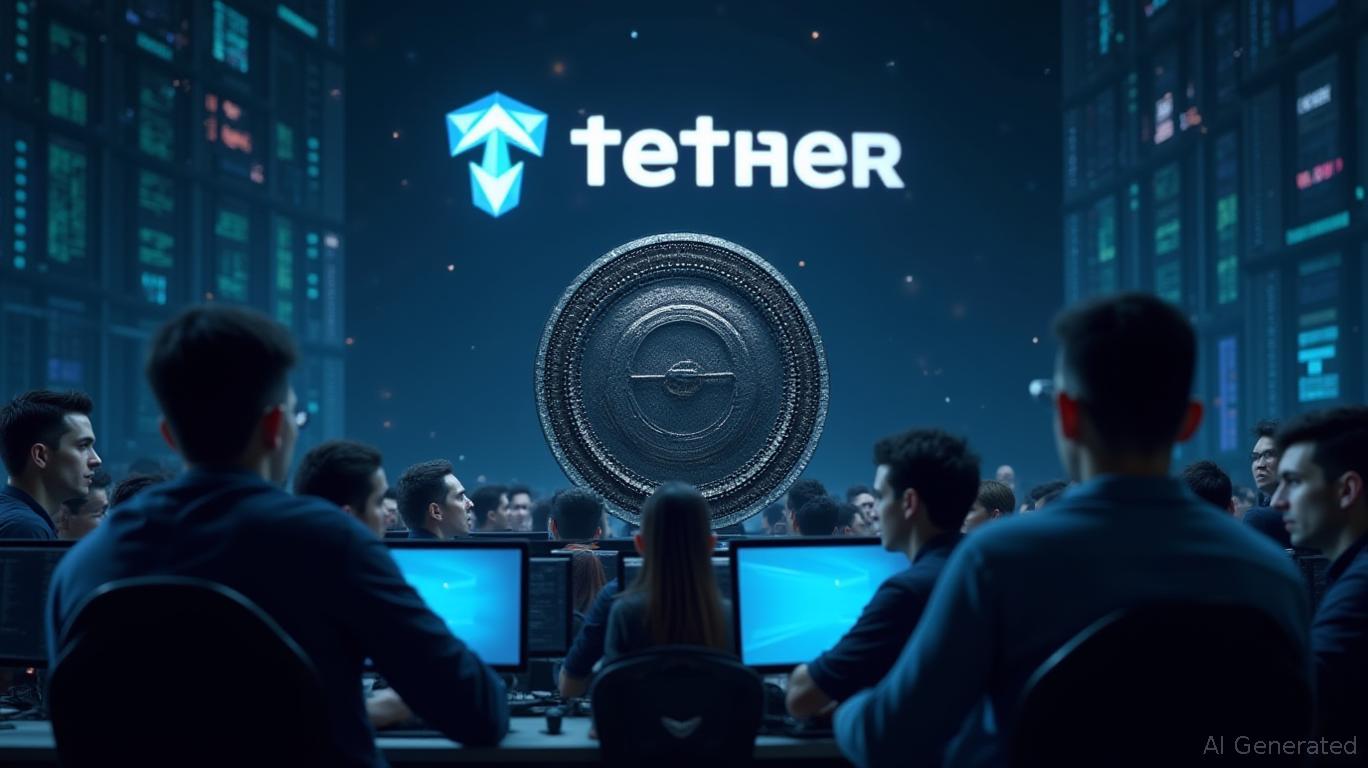AInvest Newsletter
Daily stocks & crypto headlines, free to your inbox
Tether, the company behind the USDT stablecoin, is aggressively expanding its operations beyond digital currency issuance. CEO Paolo Ardoino has announced ambitious plans to make Tether the largest Bitcoin miner by the end of the year. This move is part of a broader strategy to position Tether at the center of an increasingly automated, blockchain-driven digital economy. Ardoino envisions a future where trillions of AI agents will use USDT and Bitcoin for machine-to-machine transactions, highlighting the company's investments in mining, artificial intelligence, and self-custodial tools.
Tether's strategic pivot into Bitcoin mining is driven by a desire to enhance the security of the Bitcoin network, rather than purely for profit. The company, which operates with a relatively small team of under 200 people, reported $13 billion in profits during 2024, primarily from its holdings in US Treasuries, Bitcoin, and other reserve assets. This financial strength has enabled Tether to pursue an aggressive expansion strategy, including significant investments in energy and mining infrastructure across Latin America.
Since 2023, Tether has invested over $2 billion in energy and mining infrastructure across 15 sites in Uruguay, Paraguay, and El Salvador. These investments include renewable energy projects, construction of substations, and minority stakes in operational mining farms. The chosen locations are known for their abundant hydropower and favorable regulatory environments, which are crucial for sustainable mining growth. While exact figures for Tether’s current hashrate remain undisclosed, the company’s rapid infrastructure buildout suggests a serious commitment to becoming a major player in the Bitcoin mining sector.
Tether's ambitions extend beyond Bitcoin mining. Ardoino predicts a future where billions of autonomous software bots will negotiate, pay, and settle with one another every second, using USDT and Bitcoin as the native money. This vision of a trillion-bot economy is supported by Tether's investments in artificial intelligence and self-custodial tools. The company has launched a Wallet Development Kit (WDK) that allows developers to embed non-custodial wallets in apps or AI agents within minutes. Additionally, USDT circulates on more than a dozen blockchains, providing instant bridges between different networks and offering battle-tested liquidity reserves.
Tether's push into artificial intelligence includes the establishment of Tether Data, a research arm focused on open-source AI models, and Tether AI, a peer-to-peer network that aims to enable an unstoppable mesh of AI agents. These initiatives are part of Tether's broader strategy to become a backbone for the decentralized digital economy, embedding itself into the physical infrastructure layers of society, including energy, data, and intelligence. The company's new headquarters in El Salvador provides a regulatory sandbox and proximity to geothermal power, further supporting its Bitcoin-mining experiments.
However, Tether's ambitious plans face regulatory challenges. US lawmakers are debating stablecoin bills that could either propel stablecoin capitalization or tighten the operating window for issuers. Despite these uncertainties, Tether's substantial capital, rapid infrastructure buildout, and strategic investments position it as a significant force in the digital economy. Whether Tether can achieve its goal of becoming the world's largest Bitcoin miner by year's end remains to be seen, but its aggressive expansion and long-term vision make it a key player to watch in the evolving landscape of digital infrastructure.

Quickly understand the history and background of various well-known coins

Dec.02 2025

Dec.02 2025

Dec.02 2025

Dec.02 2025

Dec.02 2025
Daily stocks & crypto headlines, free to your inbox
Comments
No comments yet